Combat aircraft. Failed brother of IL-2
Perhaps the most inveterate fans know the name of this man. aviation last century. However, despite the fact that the creative path of Vsevolod Konstantinovich Tairov turned out to be offensively short, this designer made his contribution to the formation of aviation in our country.
Tairov was, without exaggeration, the right hand of Nikolai Nikolaevich Polikarpov, many questions about the I-16 lay on him, and Tairov was personally involved in modernization projects.
In addition, Tairov created several rather interesting machines, one of which will be discussed now.
The year is 1938. Vsevolod Tairov, a student and assistant of Polikarpov, over whom the clouds were just beginning to thicken, as an initiative proposed to develop a single twin-engine armored aircraft. Heavy escort fighter or attack aircraft.
The aircraft was designed taking into account the creation of machines of the VIT type ("Air fighter tanks") And envisaged obtaining, due to the twin-engine scheme, both high speed and powerful weapons installed in the bow, practically along the axis of the aircraft. This made it possible to increase the accuracy and power of the salvo, since it did not require the use of synchronizers.
The idea initially liked both the Air Force and the People's Commissariat of the Aviation Industry. And on October 29, 1938, Tairov received the Decree of the Council of People's Commissars of the USSR No. 256, according to which he could start creating an aircraft. But not a heavy escort fighter, but a single-seat armored attack aircraft with two M-88 engines under the designation OKO-6.
True, in the requirements, the main targets of OKO-6 were called both tanks and enemy aircraft.
It is worth noting that the tactical and technical requirements were ... somewhat fantastic. The maximum speed is 650 km / h, the ceiling is 12 meters, the turn at an altitude of 000 meters is no more than 1 seconds, the climb of 000 meters in 16 minutes - in general, about such indicators with two M-8s producing 000 hp. everyone could dream, but nothing more. The engine was frankly weak for such requirements, although, of course, it was reliable and lightweight.
On July 29, 1939, the Resolution of the KO under the Council of People's Commissars of the USSR "On the creation of a new prototype fighter aircraft in 1939-1940" was issued.
In accordance with this Resolution, the designer Tairov and the director of the plant # 43 Smirnov were to complete the aircraft and hand it over for state tests in October 1939. The second prototype was supposed to be ready in December of the same year.
Several did not have time. The first flight of OKO-6 took place on January 21, 1940.
The first test flights showed that the plane was not bad at all. Streamlined shapes, a small fuselage midsection, wing (area and span) like the British Hurricane of the first model - all this somewhat leveled out the weak M-88 engines, which actually gave 2000 hp.
And the armament was simply amazing: four ShVAK cannons.
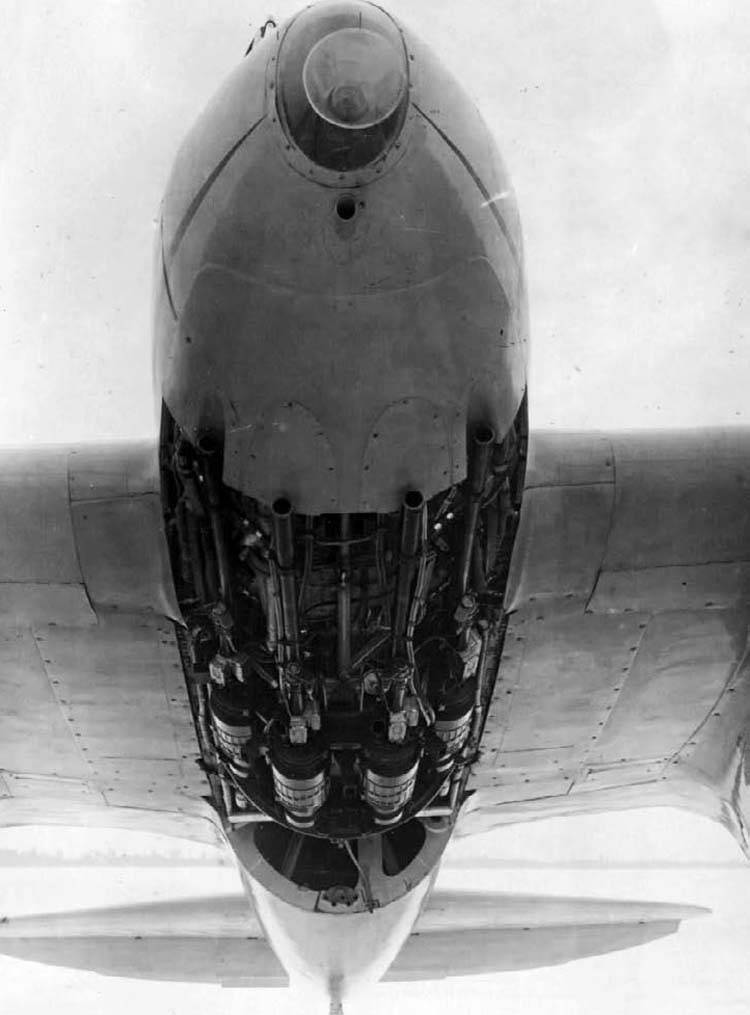
And the cockpit was very well booked. And although the M-88 engines were weak, they were more tenacious than their water-cooled counterparts.
I would like to tell you more about the armor. This, of course, is not the Il-2 armored box, to which the wings were attached, but it was also done very well.
Ahead, the cockpit was protected by an 8 mm thick armor plate. The side walls of the cockpit were made of 12 mm duralumin. Behind the pilot's head and back were covered with 13 mm thick armor plates. The bottom of the cockpit was also protected by 5-mm armor plates. In addition, 45-mm bulletproof glass was installed in the front of the lantern.
For that time - a very, very impressive car. Good aerodynamics.
To prevent the propellers from tilting the plane to the side with their reactive moment, the motors had counter-rotating propellers.
In the center section there were two protected gas tanks with a capacity of 365 liters each. In addition to them, the fuselage had a third gas tank with a capacity of 467 liters.
M-88 engines were able to accelerate the test aircraft weighing 5250 kg at the ground up to 488 km / h, and at an altitude of 7550 m - 567,5 km / h. OKO-5000 climbed 6 m in 5,5 minutes. The ceiling is 11 m. The flight range at a speed close to maximum was 100 km. The turnaround time at an altitude of 700 m was only 1 seconds. The landing speed did not fit into the terms of reference a little - 000 km / h.
The plane was not perfect: it turned out that the short machine with a single-fin tail unit has insufficient stability on the rise and turns. In addition, the plane was sloping towards the U-turn during the take-off run and take-off run.
Air Force Chief Smushkevich wrote in a letter to the People's Commissar of the Aviation Industry that the plane must be completed, as it is badly needed by the Red Army Air Force.
And it was decided to build a small series of 10 cars, but with a two-fin tail and M-88 engines.
In the summer of 1940, work was carried out to improve the flight characteristics of the OKO-6. A new, spaced two-fin tail was installed and the fuselage was slightly lengthened. M-88R gear motors of the same rotation were installed. The machine was named OKO-6bis, and then the Ta-1.
On October 31, 1940, the Ta-1 made its maiden flight.
Test pilot A.I. Emelyanov noted the stability of the machine on bends and along all three axes in flight. There was a tendency to stall at speeds below 300 km / h.
Management was distinguished by a greater load on organs than that of OKO-6. But buffing (tail oscillation by the air flow from the wings) was not detected, just as there was no flutter at speeds up to 565 km / h at an altitude of 4 m.
The plane could fly on one engine.
The maximum speed at the ground was 470 km / h, at an altitude of 4 m - 000 km / h and at an altitude of 575 m - 7 km / h, landing speed - 000 km / h. Time to climb 595 m - 135 minutes, and 5 m - 000 minutes. High-speed flight range - 6,3 km.
On January 14, 1941, during an unauthorized demonstration flight, not provided for by the test program, the right engine failed. Broken chain rods. Test pilot Yemelyanov landed the car in the forest. The plane was destroyed.
On January 31, 1941, factory tests were officially completed. Without waiting for the final conclusion, Tairov sent a letter to the Chairman of the Council of People's Commissars V.M. Molotov, the designer noted in a letter that two aircraft of his design completed 120 flights and showed very decent results.
It was noted that a practical ceiling of 10 m was obtained, the climb time of 000 m was 5000 minutes, and 6,3 m was 8000 minutes. Takeoff run - 11,6 m, mileage - 324 m. Speed range - 406 km.
A few days after the departure of the emergency commission, V.K. Tairov wrote a letter to the chairman of the Council of People's Commissars V.M. Molotov, in which he noted that two copies of OKO-6 had completed 120 flights in total and demonstrated outstanding qualities.
As an argument, Tairov cited the testimonials of TsAGI test pilots, who noted the ease of control, which made the aircraft affordable for combat pilots with a minimum of time for retraining.
The aircraft was able to perform all aerobatics and fly on one engine up to an altitude of 4 m, inclusive.
Ta-1 had a good modernization prospect due to the installation of more powerful engines, which could appear over the next years. And in terms of armament, the Ta-1 was generally superior at that time to any fighter in the world.
At the same time Tairov actually complained that nothing was being done to introduce the aircraft into the series. His proposal was to build a series of 15-20 vehicles with subsequent military trials.
During. It was at this time, in December 1940, at a meeting of the top command staff of the Red Army that the question was raised that the Red Army Air Force does not currently have a high-speed aircraft with powerful cannon armament capable of destroying both aircraft and armored vehicles of the enemy.
The reaction, one might say, was instant. On January 25, 1941, by the Decree of the Council of People's Commissars of the USSR, Tairov was instructed to build and submit for testing the Ta-3 aircraft. The first version with M-89 engines (1250 hp), the second - with M-90 engines (1600 hp). The work should be completed, respectively, by May and October 1941 ...
It was also recommended to strengthen the armament.
On the first copy of the Ta-3, two ShKAS 7,62 mm machine guns were added to the four ShVAK cannons.
Or was the option with 4 12,7-mm Taubin machine guns (OKB-16 NKV) still under consideration. It was a variant of a heavy fighter.
The second Ta-3 was an anti-tank version. Its armament consisted of one large-caliber 37-mm ShFK-37 cannon, two 23-mm MP-6 cannons and two ShKAS machine guns.
By April 28, 1941, the conversion of the first copy of OKO-6 into Ta-3 was completed.
Compared to the Ta-1, the Ta-3 reduced sweep and increased the vertical tail area. Changed the doors of the main landing gear. The wheels in the retracted position began to protrude slightly outward.
The armament consisted of four ShVAK cannons (200 rounds per barrel) and two ShKAS machine guns with a total stock of 800 rounds.
The plane fell into the hands of test pilots of the flight research institute NKAP and from May 12 to July 10, 1941, the Ta-3 M-89 was tested. Leading test pilot Yu.K. Stankevich and test pilots N.V. Gavrilov, V.N. Grinchik, G.M.Shiyanov and A. B. Yumashev skated a complete program of state tests and gave the car very positive reviews.
With a flight weight of 6050 kg, the maximum speed at 7 m was 000 km / h. The flight range at a cruising speed of 580 km / h was 440 km. Service ceiling 1060 m.
The Ta-3 was characterized as a stable aircraft in flight, with a somewhat large load on the controls. Flight on one motor is possible.
The cockpit is spacious, the forward and upward visibility is good, the sideways are insufficient, the downward view is unsatisfactory.
During the tests, no major operational deficiencies of the aircraft were found.
The conclusions made by a group of LII pilots noted that the main positive qualities of the Ta-3 aircraft are:
- powerful small arms and cannon armament
- good booking for the pilot
- high survivability of the propeller-driven group due to the installation of two air-cooled motors
- the ability to produce all aerobatics
- with a loss of speed, there is no tendency to stall on the wing
- the ability to continue flying on one engine
- simplicity and ease of maintenance during operation.
The main disadvantages of the aircraft were:
- significant efforts on the control stick when landing
- heavy loads on the legs when flying on one motor
- poor design and manufacturing performance of the lantern
- poor visibility to the sides and back
The conclusion was the recommendation of the LII NKAP to release the Ta-3 in the attack aircraft version, with one 37-mm cannon, two 20-mm cannons and two 7,62-mm machine guns.
The war was already going on, the Germans were already demonstrating the effectiveness of their tank strikes.
On July 28, 1941, Tairov sent a memo to Shakhurin, in which he said that replacing weapons from four ShVAKs with an attack aircraft battery would not pose any difficulties and it was possible to equip aircraft in this version.
Foreseeing, most likely, problems with the M-89, which was eventually discontinued as unreliable, Tairov wrote that there were developments in equipping the Ta-3 with M-82 engines. The use of these engines can further increase the speed by 12-15 km / h.
Vsevolod Konstantinovich really wanted to see his plane on the battlefields, causing damage to the enemy. Therefore, the designer did everything to ensure that the Ta-3 went into series. For this Tairov asked Shakhurin to use plant No. 3 in Ulyanovsk for the production of Ta-127 and to relocate to Ulyanovsk the same plant No. 483, which was evacuated to Kuibyshev.
Shakhurin gave the go-ahead, but a terrible thing happened: on October 29, 1941, while flying to Kuibyshev, Tairov, in a group of aviation specialists, died in a plane crash in the Penza region.
As a result, the Ta-3 was left without the Chief Designer. Plus the relocation of factories. All this led to the fact that the design bureau of plant # 483 was able to finish the last version of the Ta-1942bis 3M-2 only by May 89.
It differed from the Ta-3 bis only in its enlarged wings and fuel reserves. The total weight of the aircraft increased to 6626 kg, the speed at the ground dropped to 452 km / h, at an altitude of 7000 m to 565 km / h. The ceiling has decreased to 9 m. Only the flight range has increased, to 200 km.
The last blow of the Ta-3 was struck by the engine builders. The M-89 was discontinued and the aircraft was left without engines. Attempts were made to equip the Ta-3 with the AM-37 and M-82A motors, but in the absence of Tairov, the OKB of plant number 483 was disbanded.
The case is simply unique. The Ta-3 went through a large cycle of thorough factory and government tests, which were generally completed successfully.
In addition, serious studies were carried out and ways were outlined for further improving the aircraft. Its further development was conditioned solely by the creation of more powerful engines.
But despite the fact that the need to adopt the Ta-3 into service was well understood not only by the leadership of the Air Force, but also by the NKAP, our Air Force never received this aircraft.
And here everything is, in principle, understandable. On the one hand, there was already Ilyushin's attack aircraft, which showed its effectiveness. On the other hand, the lack of engines in our country ruined more than one beautiful aircraft.
Armament tests showed that a pilot with good flight and shooting training on a Ta-3 with an anti-tank version of weapons guaranteed to hit a German armored personnel carrier of the Sd Kfz.250 type from the first approach under attack conditions in a side projection at a gliding angle of 20-25 degrees from a distance of 300- 400 meters. The probability of defeat was up to 0,96.
It was less likely to hit the Pz.III Ausf.G medium tank - no more than 0,1. But this is a tank.
If the Ta-3 was armed with four ShVAK, then it became a serious threat to unarmored or lightly armored vehicles. Sd Kfz.250 could be destroyed with a probability of 0,8 - 0,85, an He 111 aircraft on the ground - 0,94 - 0,96, a steam locomotive with a probability of 0,9-0,95.
The Ta-2 could hardly replace the Il-3 or compete with it, but it would be easy to supplement it. With a higher speed, twice the range and better survivability due to two motors, the Ta-3 could perfectly complement the Il-2 where it would be difficult for the latter to work.
That is, the Ta-3 could not only storm the enemy mechanized columns. But also to attack small enemy ships at a distance from the coast. Both the range and the battery of four guns allowed this.
Or, as a heavy escort fighter, the Ta-3 could well be useful in covering the same convoys from enemy torpedo bombers.
In general, this is the case when there was a plane, there was a need for it, but no one cared about it. A student of Polikarpov Tairov built a really decent car, it is a pity that the People's Commissariat of the Aviation Industry was not in place of the Deputy People's Commissar for new technology, whose duties would include the deployment of the production of Ta-3.
LTH TA-3bis
Wingspan, m: 14,00
Length, m: 12,20
Height, m: 3,76
Wing area, м2: 33,50
Weight, kg
- empty aircraft: 4 450
- takeoff: 6 626
Engine type: 2 х М-89 х 1 150 HP
Maximum speed km / h
- near the ground: 448
- at height: 595
Cruising speed at altitude, km / h: 542
Practical range, km: 2 065
Maximum rate of climb, m / min: 482
Practical ceiling, m: 11 000
Crew, prs: 1
Armament:
- one 37-mm gun ShFK-37
- two 20-mm ShVAK cannons
- two 7,62 mm ShKAS machine guns
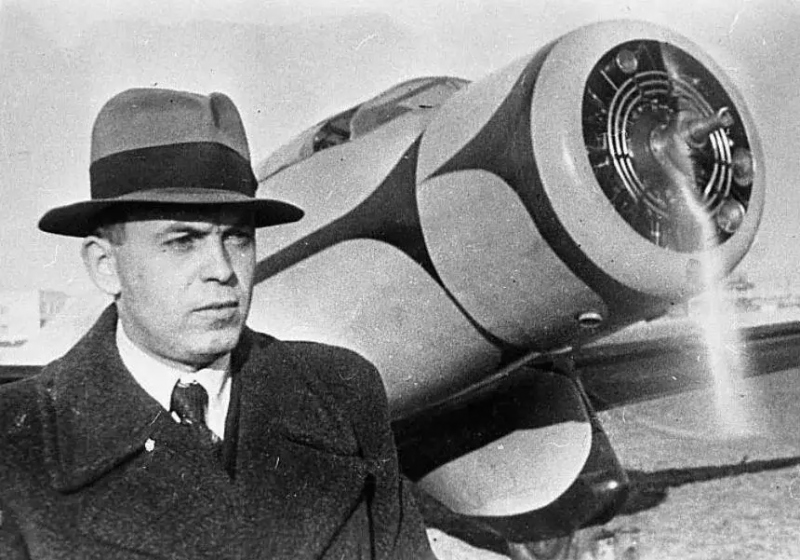
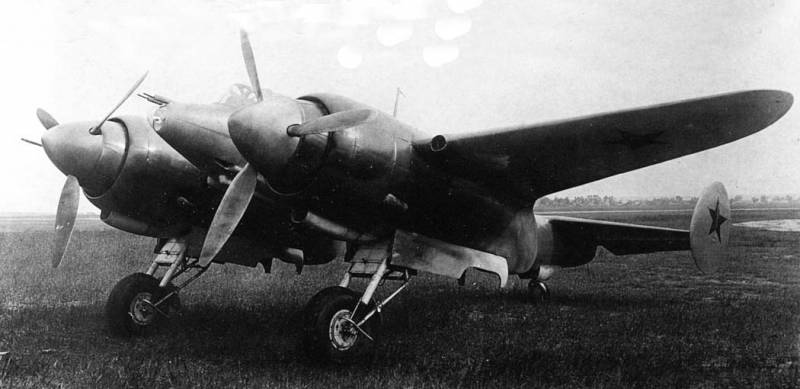
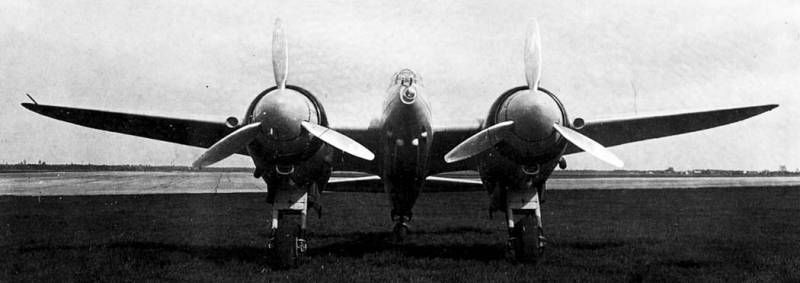
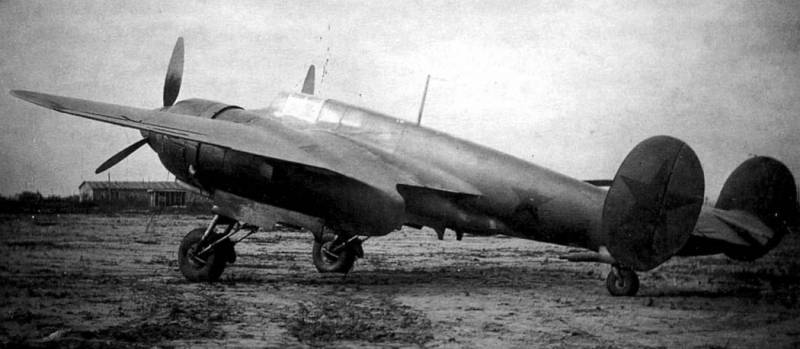
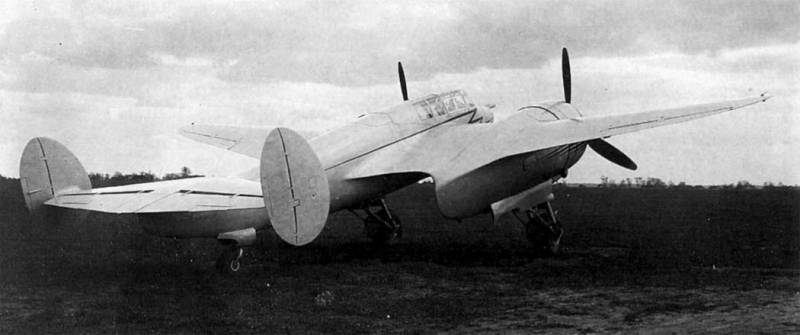
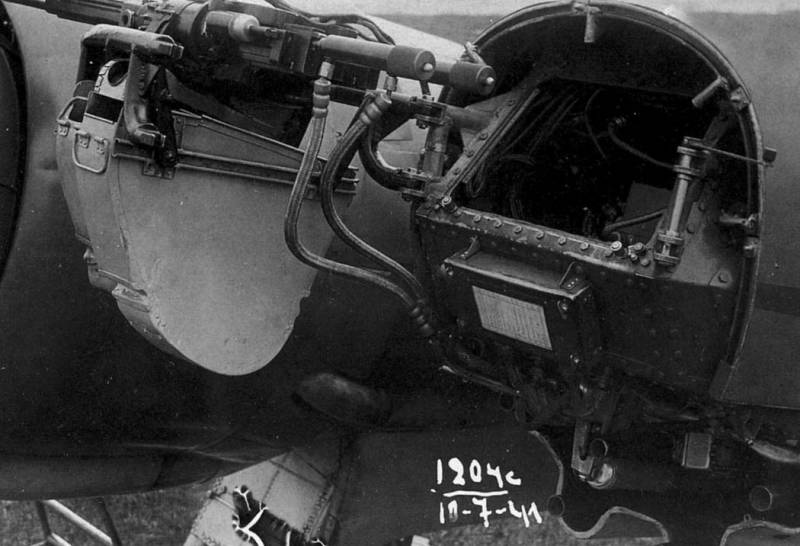
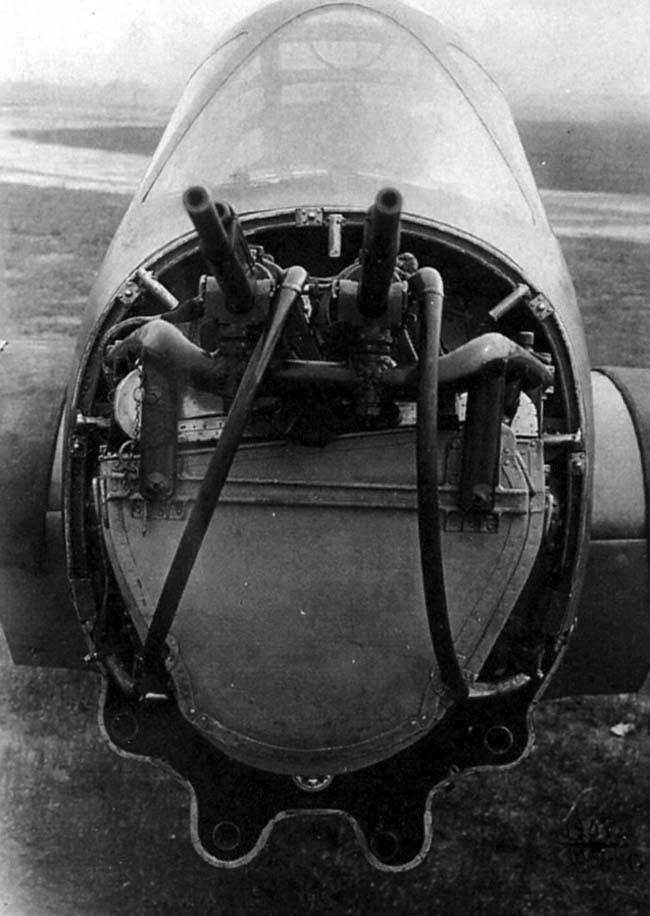
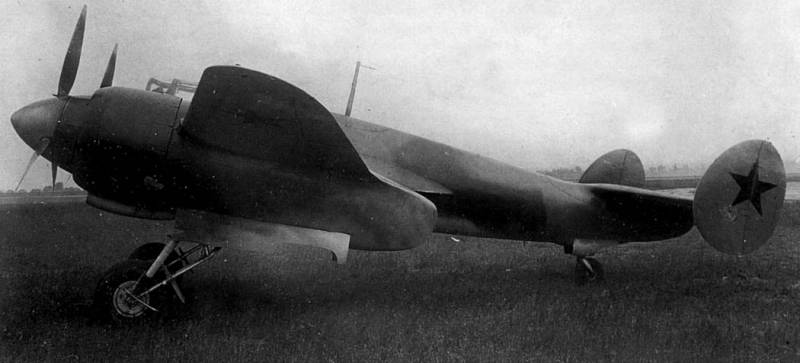
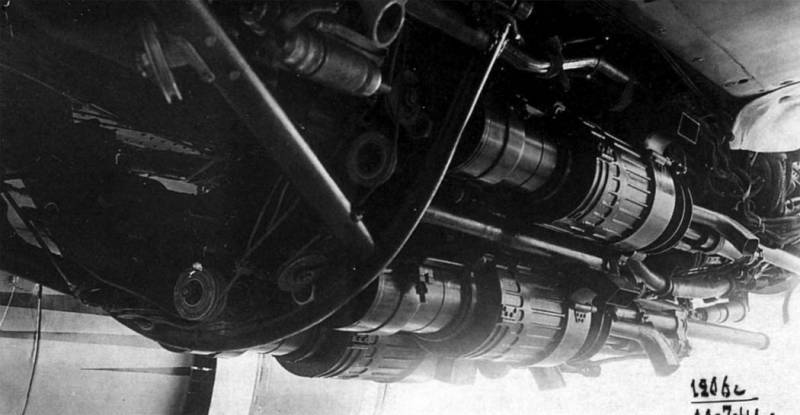
Information